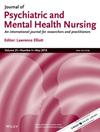Enhancing Person-Centred Care in Suicide Prevention: A Nursing Perspective
Abstract
Background
Suicide prevention within nursing has historically been dominated by biomedical models that emphasize risk assessment and symptom management. While these frameworks offer structure and liability reduction, they often fail to capture the deeply personal and existential dimensions of suicidality. The reliance on predictive tools with modest accuracy, such as the Columbia-Suicide Severity Rating Scale (C-SSRS), has led to a gap between assessment and meaningful intervention. Critics argue that this model fosters a procedural approach that discourages patient disclosure and limits therapeutic engagement. In contrast, person-centered care (PCC) emphasizes relational trust, individualized understanding, and the integration of patient narratives into clinical decision-making. This paper examines the need to shift from standardized, symptom-focused approaches toward a dynamic, patient-centered framework.
Methods
This paper critically evaluates the limitations of biomedical suicide prevention strategies by synthesizing theoretical contributions from key suicidologists, including Edwin Shneidman, Antoon Leenaars, Konrad Michel, Igor Galynker, and David Jobes. Evidence-based, person-centered models such as the Collaborative Assessment and Management of Suicide (CAMS) and the Narrative Crisis Model (NCM) are explored in contrast to traditional suicide risk assessments. Additionally, barriers to implementing PCC in nursing—such as time constraints, administrative demands, and gaps in professional training—are examined.
Results
While biomedical models provide standardized risk management strategies, their over-reliance on quantifiable indicators fails to address suicidality's multidimensional nature. The predictive limitations of suicide screening tools often lead to overestimation or underestimation of risk, increasing the likelihood of missed intervention opportunities. Furthermore, systemic factors such as high-acuity environments and compassion fatigue contribute to nurses' challenges in engaging with person-centered interventions. Models like CAMS and NCM have demonstrated greater efficacy in fostering trust, enhancing clinical engagement, and addressing the subjective experiences of suicidal individuals, ultimately improving outcomes.
Conclusions
The limitations of traditional biomedical approaches underscore the necessity of integrating person-centered care into nursing practice. Suicide prevention should not be dictated solely by standardized risk assessments but should instead prioritize therapeutic alliance, empathy, and the co-construction of meaning. Nurses, given their frontline role in patient care, are uniquely positioned to transform suicide prevention through narrative-based interventions and compassionate engagement. However, achieving this paradigm shift requires institutional support, expanded nursing education, and systemic recognition of the importance of relational care. This paper advocates for a holistic approach that moves beyond risk prediction toward meaningful, person-centered interventions that address the lived experiences and psychological distress of individuals at risk for suicide.

 求助内容:
求助内容: 应助结果提醒方式:
应助结果提醒方式:


